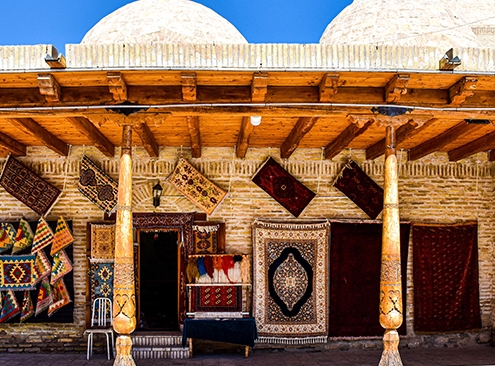
Things to do in Bukhara, Uzbekistan + Photos
/
0 Comments
Bukhara, located in the heart of Uzbekistan, is a city steeped…

Iranian Azerbaijanis (Culture, Foods, Clothes, Music & more!)
Iran is a broad country with diverse ethnic groups. Iran is home…

Top 15 Summer Destinations in Iran
Iran, a country with a rich history and diverse culture, boasts…
 https://irandoostan.com/dostcont/uploads/2023/05/best-iranian-movies.jpg
366
712
nelia shidfar
https://irandoostan.com/dostcont/uploads/2025/05/Irandoostan-logo.webp
nelia shidfar2023-05-22 16:46:522025-04-13 12:51:18Top 10 Iranian Movies
https://irandoostan.com/dostcont/uploads/2023/05/best-iranian-movies.jpg
366
712
nelia shidfar
https://irandoostan.com/dostcont/uploads/2025/05/Irandoostan-logo.webp
nelia shidfar2023-05-22 16:46:522025-04-13 12:51:18Top 10 Iranian Movies
The Top 10 Iran museums (Address, Timing)
The history of a country is an interesting part of traveling…
 https://irandoostan.com/dostcont/uploads/2023/05/Iran-summer-fruits-2.jpg
366
712
nelia shidfar
https://irandoostan.com/dostcont/uploads/2025/05/Irandoostan-logo.webp
nelia shidfar2023-05-08 09:49:142025-05-14 14:10:13Top Iran fruits you must try (Benefits, Photos)
https://irandoostan.com/dostcont/uploads/2023/05/Iran-summer-fruits-2.jpg
366
712
nelia shidfar
https://irandoostan.com/dostcont/uploads/2025/05/Irandoostan-logo.webp
nelia shidfar2023-05-08 09:49:142025-05-14 14:10:13Top Iran fruits you must try (Benefits, Photos)
Top 6 Best Iran Spring Destinations + Photos
Iran is absolutely beautiful, and this beauty doubles in spring.…

Alay Bazaar Tashkent, Uzbekistan: Photos, Location
Alay Bazaar, also known as the Grand Bazaar of Central Asia,…

Siab Bazaar (Siyob Bazaar) Samarkand: Photos, History
Samarkand is the cultural center of Uzbekistan. Throughout history,…

What to buy in Uzbekistan? Uzbekistan Souvenirs + Photos
Traveling to a new country creates new experiences and opportunities.…

Chorsu Bazaar Tashkent: Photos, Opening Hours, info
Chorsu Bazaar of Tashkent is an old bazaar in the heart of Uzbekistan's…

Registan Square Samarkand, Uzbekistan: Photos, History
Samarkand Registan Square is among the most magnificent tourist…

Things to Do in Qatar: Photos, Address, Opening Hours
Known for its arts and museums, Qatar is one of the most traveled…

Qatar History: All You Need to Know About
Qatar, the modern peninsular state of the Middle East, is a famous…

Tashkent Metro: Map, Stations, Ticket Price
Metro systems have always been the easiest way to commute and…

Things to Do in Khiva, Uzbekistan: Photos, Info
Khiva awakes from its ruins like a phoenix awakened from ashes.…

Things to Do in Samarkand: Photos, Info
"If that Shirazi Turk accepts my heart in their hand, for their…

Things to Do in Tashkent, Uzbekistan: Photos, Info
Tashkent is the largest city and capital of Uzbekistan. Stone…


